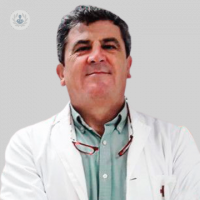Causes, symptoms, diagnosis and treatment of Crohn's Disease
Written by: Crohn's disease is a chronic inflammation of the digestive tract. Although it can affect any part of the tube from the mouth to the anus, usually it appears in the lower portion of the small intestine (ileum) and large intestine (colon).
Crohn's disease is a chronic inflammation of the digestive tract. Although it can affect any part of the tube from the mouth to the anus, usually it appears in the lower portion of the small intestine (ileum) and large intestine (colon).
The anatomic involvement of Crohn's disease is segmental, transmural and discontinuous. This means that healthy alternates layers affected and affects all parts of the intestine, including mucous. All this will determine the symptoms in each patient.
Crohn's disease is a chronic condition. Some people have long periods of remission that can last years, in which no symptoms. There is no way of predicting when a recurrence of signs may occur.
Causes of Crohn's disease
The cause is unknown, but appears to be triggered by the interaction of genetic and environmental factors, predominantly its prevalence in developed countries.
Current theories focus on an immunologic (the body's defense system) or a bacterial cause. Crohn's disease is not contagious, but has a slight genetic tendency, that is hereditary.
What are the symptoms of Crohn's disease?
Segmental its variable nature and location variables causing their symptoms. The classic signs of the disease are diarrhea, abdominal pain and weight loss; however, this triad only occurs in 25% of the diagnosed cases.
Diarrhea is the main symptom and may be secondary to different circumstances: inflammatory bowel disease, bacterial overgrowth, impaired absorption of bile salts etc.
Abdominal pain will depend on the location of the disease. Usually this is determined by the recruitment of nociceptive mediators (nerve) to the inflamed area.
Weight loss occurs in 2/3 of the cases and is secondary to the inflammatory process activity (catabolism), phenomena coexisting malabsorption and anorexia itself.
Other symptoms that may occur are skin lesions, joint inflammation problems and perianal lesions, such as fissures, fistulae and abscesses, which require specific treatment.
How is Crohn's disease diagnosed?
Despite the development of new imaging techniques for the study of the digestive tract, the basis of the diagnosis of Crohn's disease has not changed in the last 3 decades. Moreover, the lack of a typical lesions of the disease and the lack of specific symptoms require that the diagnosis is established by the combination of findings and image tissue in patients with clinically compatible.
Treatment of Crohn's disease
Initial treatment is usually with drugs. Although there is no "cure" for Crohn's disease, treatment with one or more drugs used to treat early stage and relieve symptoms. The drugs most commonly prescribed anti-inflammatory agents and various steroids.
We know that 90% of patients will need at least one surgery. However, surgery should be reserved only for complications, because the disease is not going to 'cure' and recurrence is the norm.
In any case, it is generally young patients undergoing multiple treatments with a chronic and recurrent. Therefore, most experts coloproctology recommend the management of these patients in specialized units, where close coordination between all the medical professionals there.


